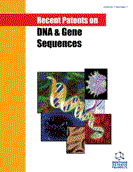Abstract
PrP, the principal factor modulating resistance/susceptibility to transmissible spongiform encephalopathies, is a well conserved protein bearing strong phylogenetic information, in spite of its relatively short sequence. The construction of the PrP tree allows inferring the probable ancestral sequence for Bovidae where variants were recorded. This ancestral PrP sequence is constituted by a series of 5 octa-repeats, 3 α-helices and 2 β-strands which combines together to form an antiparallel β-sheet. The appearance of a 6th octa-repeat in the Bovinae ancestor during the evolution of Cetartiodactyla is discussed. Additionally, the variation of the substitution rates of amino acids along the sequence revealed that the sites associated to resistance/susceptibility to TSE are mostly located in conservative regions, including α-helices and β- strands. The composition of most variants very sensitive to TSE in sheep and human corresponds to derived sequences compared to the Eutherian ancestor. However, a homozygous resistant variant in sheep differs from the ancestral state.
Keywords: Prion protein, transmissible spongiform encephalopathies, substitution rate, ancestral and derived states, sensitivity/ resistance
 15
15

